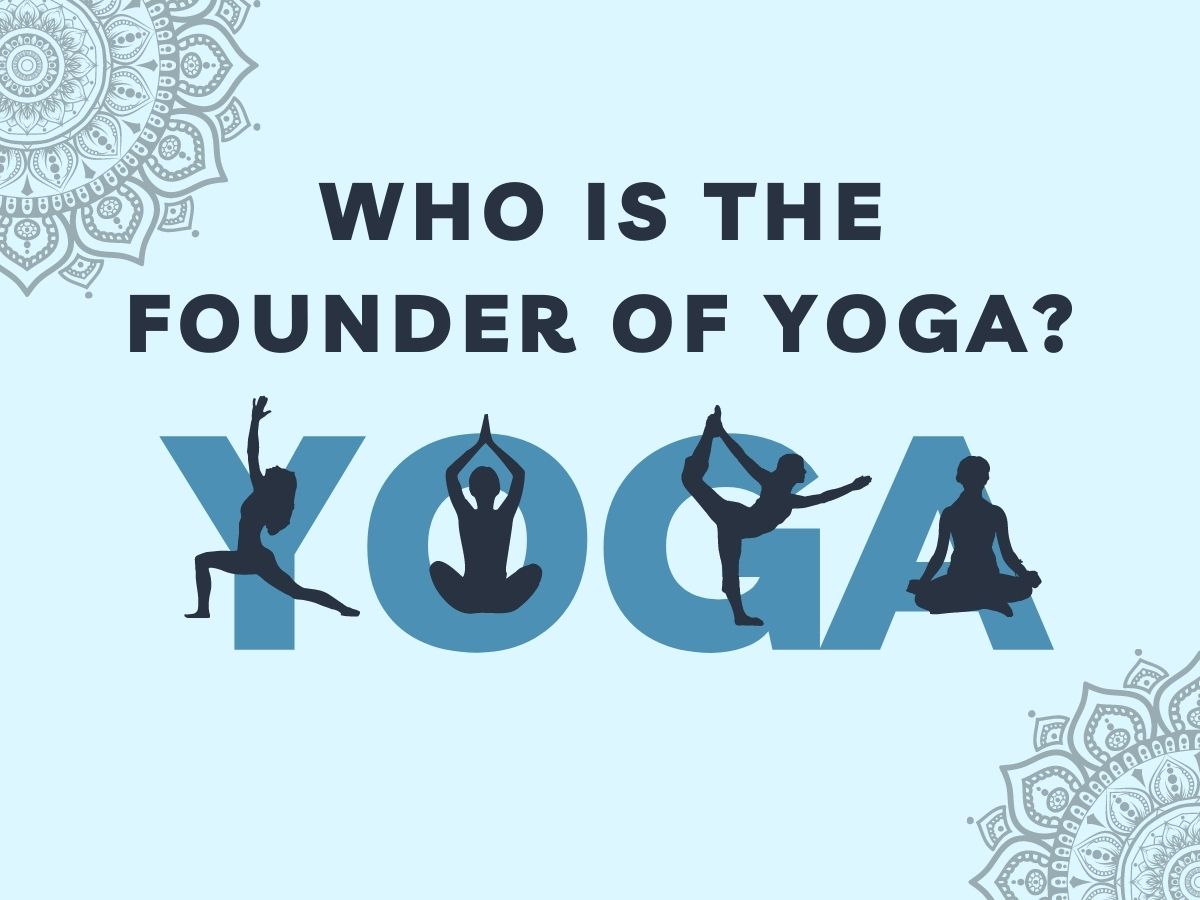Who Is The Founder Of Yoga?

Yoga has gained a great deal of popularity over the past several decades. An increasing number of practitioners are adopting the practice for improved physical and mental wellness. It is a practice that dates back thousands of years and began in India. But have you ever wondered, "Who founded yoga?"
Several research has demonstrated the rising popularity of yoga. According to a Yoga Alliance and Yoga journal survey, the number of yoga practitioners rose by more than fifty percent between 2012 and 2016.
Who is the founder of yoga?
Patanjali is the inventor of yoga. He is credited with writing the earliest yoga treatise, The Yoga Sutras.
He is also the namesake of an Indian consumer products firm, Patanjali Ayurved. Patanjali's Yoga Sutra is the first and oldest yoga manual. It was likely written more than two thousand years ago.
It covers the idea and practice of yoga and how it brings more mental and physical discipline to the practitioner. According to Edwin Bryant, yoga consists mostly of meditative techniques that culminate in the attainment of a state of consciousness devoid of all active and discursive thought.
In 1896, the famous Indian philosopher Swami Vivekananda wrote his masterpiece, "Raja Yoga." It was based on Patanjali's "The Yoga Sutras."
Swami Vivekananda's work is credited with establishing Yoga Sutras as the definitive text on yoga worldwide.
Patanjali organized his yoga sutras into four chapters with 195 sutras each (Aphorisms). 'Sutra' in Sanskrit signifies a thread.
The 195 Sutras of Patanjali's yoga sutras include substantial philosophical assertions expressed concisely.
The author of these sutras has attempted to convey as much information as possible in as few words as feasible.
Who is Patanjali?
Patanjali, the originator of yoga as a discipline, existed between 500 and 200 B.C. His life is little understood, and historians have been unable to develop a solid birth-to-death timeline.
There are several legends surrounding his birth. Even more, he is regarded as an incarnation of Ananta and Seshanaag.
Differing interpretations exist regarding the number of persons called Patanjali in Indian culture.
There are three notable figures in Indian history with the name Patanjali.
The initial official text on yoga, "The Yoga Sutras," was written by a single author. He is also credited with writing a commentary on Panini's Sanskrit grammar work, Ashtadhyayi.
The second individual was the author of the Nidana sutras, a valuable resource for Vedic study.
Patanjali, who taught Samkhya philosophy, was the third individual.
According to historians, the three persons listed above belonged to different times and were distinct individuals.
However, according to Indian tradition, all of the contributions mentioned above were made by Patanjali, the inventor of yoga.
Birth of Patanjali
Numerous tales surround the birth of Patanjali, the inventor of yoga. It is thought that he voluntarily assumed human form on earth to aid humanity).
There are several well-known traditions regarding the birth of Patanjali. The most well-known one is as follows: Patanjali is a manifestation of the god Sheshnag, according to this tale.
According to the tale, Lord Vishnu was once captivated by Lord Shiva's dancing motions. While observing, his body began regularly moving, making it heavier. Since Lord Vishnu sat on Sheshnag, he endured great anguish.
As soon as the dance concluded, Lord Vishnu's body regained its former lightness. Lord Sheshnag wished to discover the explanation for the metamorphosis and the dance.
Lord Vishnu informed him that Lord Shiva would provide him with this opportunity. Lord Sheshnag began pondering to determine who his mother would be when he assumed human form.
This was when he knew he would be the son of the Indian yogini Gonika, who prayed for a son.
Once, while praying to the Sun god to grant her wishes, Monika noticed a little snake in her palms. Later, this serpent assumed a human shape.
She gave him the name Patanjali, which means "one who has sunk into folded palms in prayer."
Ashtanga, or yoga's eight limbs
The yoga sutras of Patanjali classify yoga into eight types. These are known as Ashtanga or the eight limbs of yoga.
1) Yama: This principle emphasizes personal discipline, especially nonviolence and truthfulness.
2) Niyama: These are the practices necessary to develop one's character.
3) Asanas: This refers to the physical aspect of yoga that involves various postures and asanas.
4) Pranayama: It involves the regulation of breath. A solid command of your breathing increases your ability to focus and general health and well-being.
5) Pratyahara
6) Dharana
7) Dhyana
8)Samadhi
Yoga is a systematic practice of breathing control, physical exercise, diet control, relaxation, positive thinking, and meditation aimed at developing harmony in body, environment & mind. So if you are looking for the best yoga teacher near you, then Finndit is a platform that will give you accurate information about the best yoga teachers and classes in your city.
Read Also -
What Is The True Meaning Of Yoga?
Who Is Known As The Father Of Yoga?
Which Are Obstacle Elements In Meditation?
